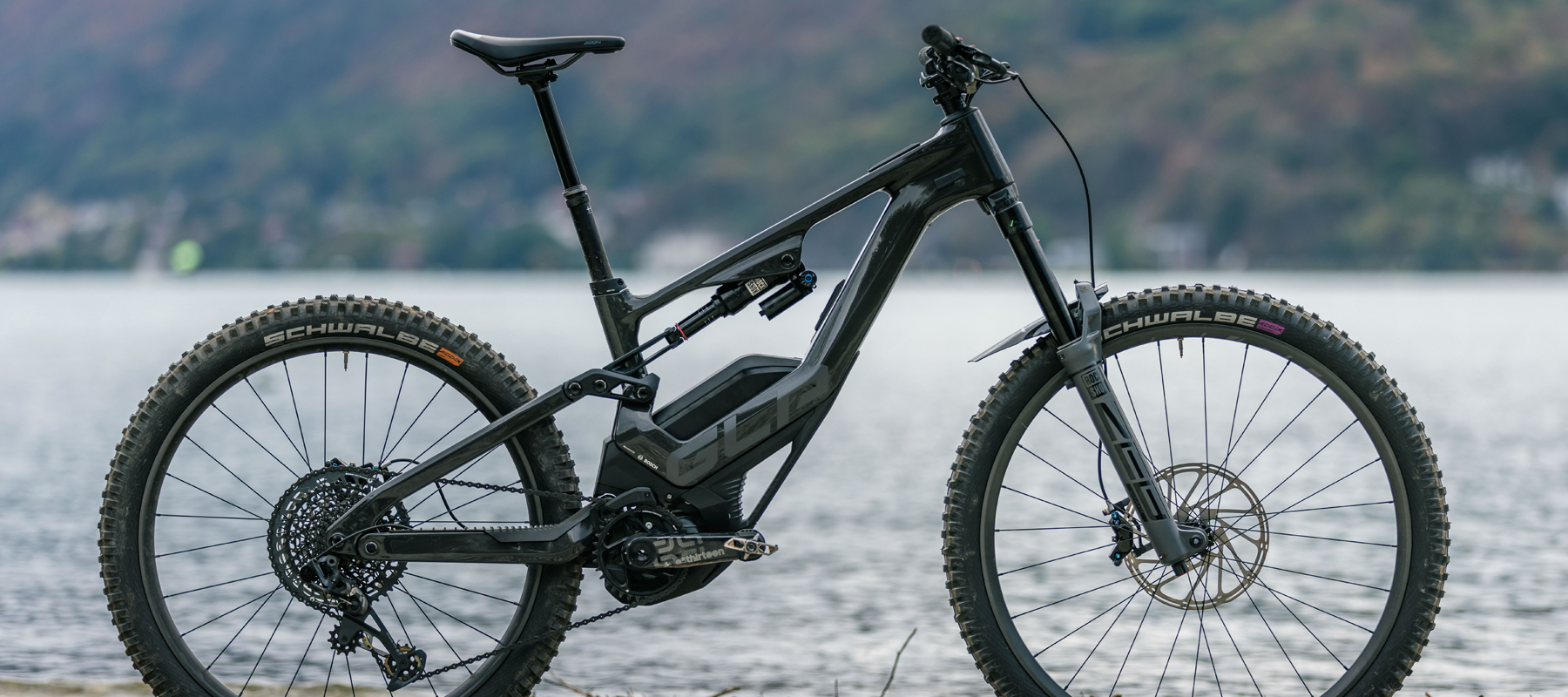Early Verdict
By shunning the status quo of e-MTB aesthetics, Lapierre has built a beautifully balanced and agile e-enduro bike that will delight whether racing or rallying around your local trails.
Pros
- +
Confident handling
- +
Very playful and maneuverable
- +
Excellent weight distribution
- +
Powerful motor and big battery
Cons
- -
Plastic covers feel cheap and risk damage
- -
Rattly
- -
35mm bar/stem combo is a bit harsh
- -
No bottle cage mounts
Why trust BikePerfect
Lapierre’s Gravity Logic Project started as a concept bike driven by the great Nico Vouilloz to create an e-MTB that rides more like a traditional unpowered MTB. The first generation was released in 2017 and featured a more trail-orientated 140mm of travel followed by the second generation which had a focus on all-mountain riding. With the release of the third generation Lapierre Overvolt GLP3, it has now evolved into a proper long-travel bike aimed at competition as Lapierre sees enduro as the predominant style of racing for e-MTBs.
Despite the third-generation Overvolt GLP3 getting an enduro race overhaul, it stands out compared to most of the best electric mountain bike mainstays with its external battery and unusual frame layout. Choosing to keep the battery external was pivotal in Lapierre's bike design, as a result, the Overvolt GLP3 could be one of the best e-MTBs I have ever ridden.
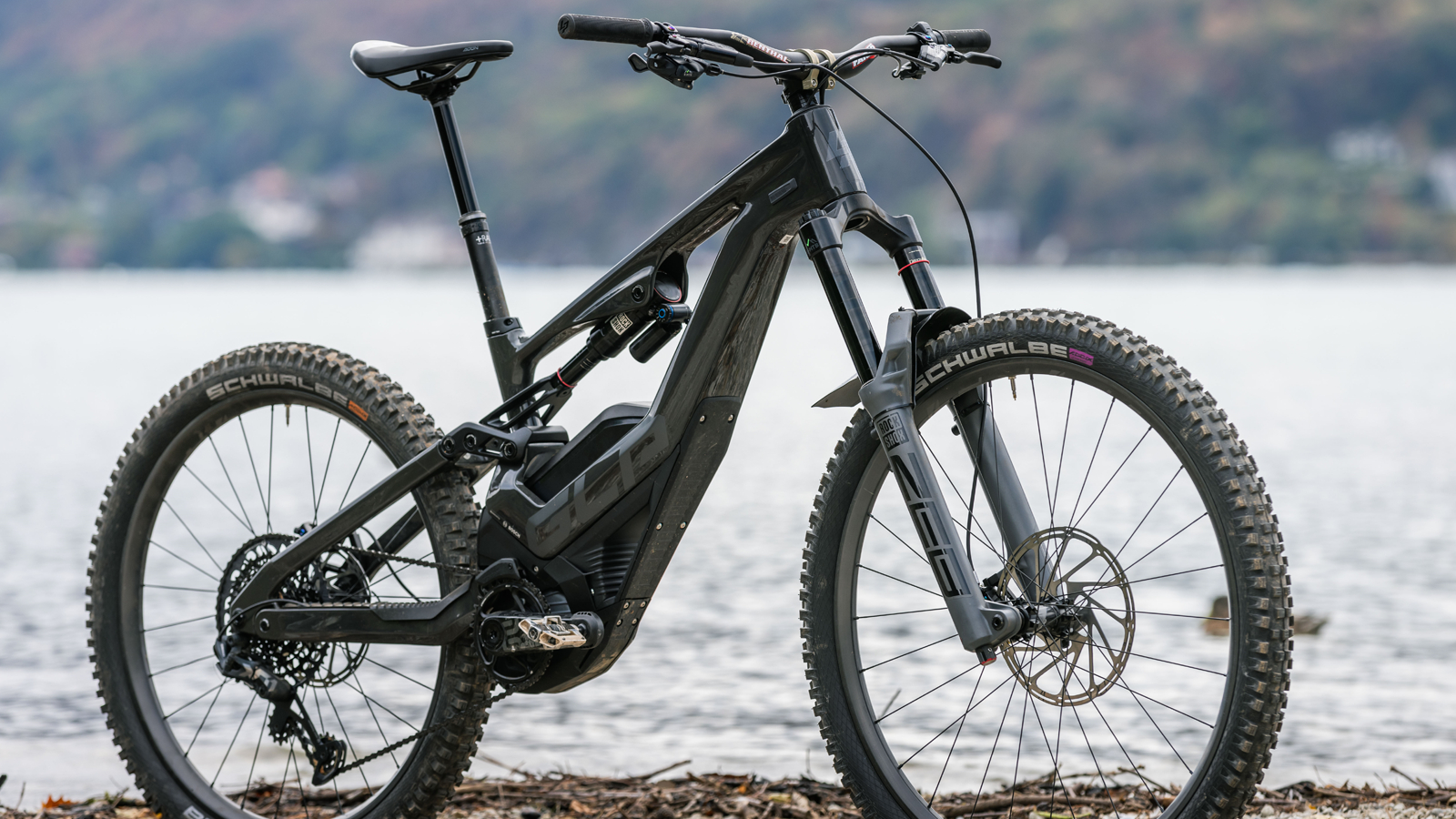
Design and geometry
The external battery immediately defines the GLP3, not just an aesthetical throwback to the original Overvolt GLP, it also plays a significant role in the design of the bike. Once common, Lapierre’s GLP3 is now an outlier as almost all other e-MTB brands opt to conceal the battery within the downtube, including Lapierre themselves on their E-Zesty lightweight e-MTB.
Lapierre says that the external battery position not only offers a net overall lower weight but also a more centered distribution of the battery weight as downtube-integrated batteries with big capacity will push more on the head tube. Lapierre say this is the underlying issue that causes e-MTBs to push through on loose and slippy corners and making it harder to lift the front wheel. The GLP3's motor is rotated slightly in order to drop the battery as low into the frame as possible. It's a big battery too, the GLP3 comes with a 725Wh Bosch Power Pack, but the smart system is compatible with the 550Wh battery too if you're looking for a lighter race setup.
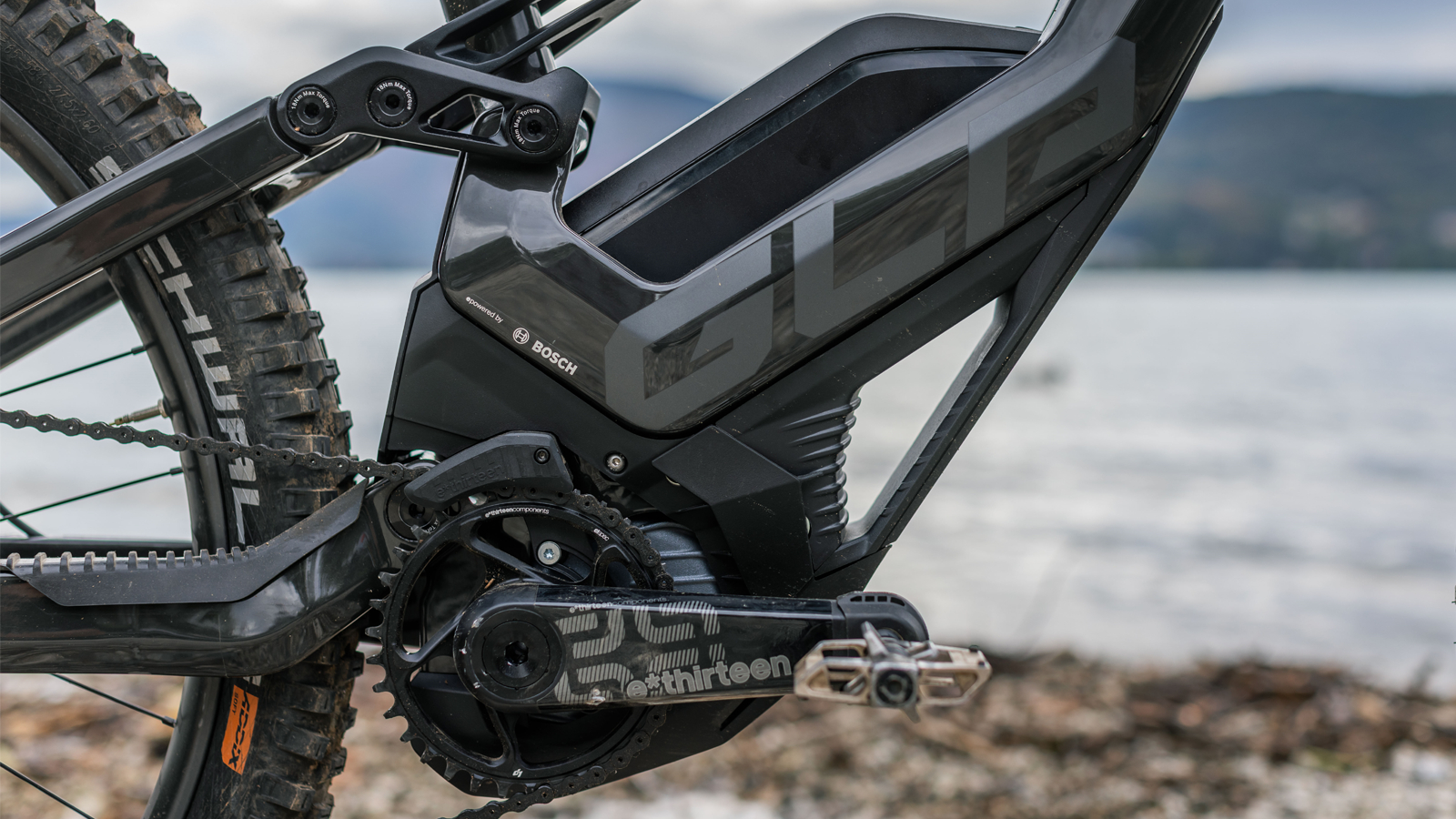
Most riders will be happy to have the big battery so they can get the most out of the Bosch Performance Line CX Race motor that is specced on the Team (tested here) and SE models. There will also be an Overvolt GLP III Elite model with a standard Bosch Performance line CX motor. The CX Race motor has the same 85Nm of torque but delivers up to 600 watts at peak power (400 percent vs 340 percent) compared to the Performance CX. The Race motor also features a longer Extended Boost to help scale technical climbs and a lower motor weight.
The UD SLI carbon frame was built around the battery and motor and now delivers 173mm of travel thanks to a longer shock absorber stroke. That's paired with 170mm fork up front and the ubiquitous mullet (29in front wheel / 27.5 rear wheel) setup. The frame is made from unidirectional IM/VHM fiber, using VHM high module fibers for stiffness and IM low module fibers for strength. All frame sizes are specifically laid up for a consistent ride feel, using more VHM on larger sizes for increased stiffness. Lapierre claims the weight of the bare frame is 3.3kg for a size medium.
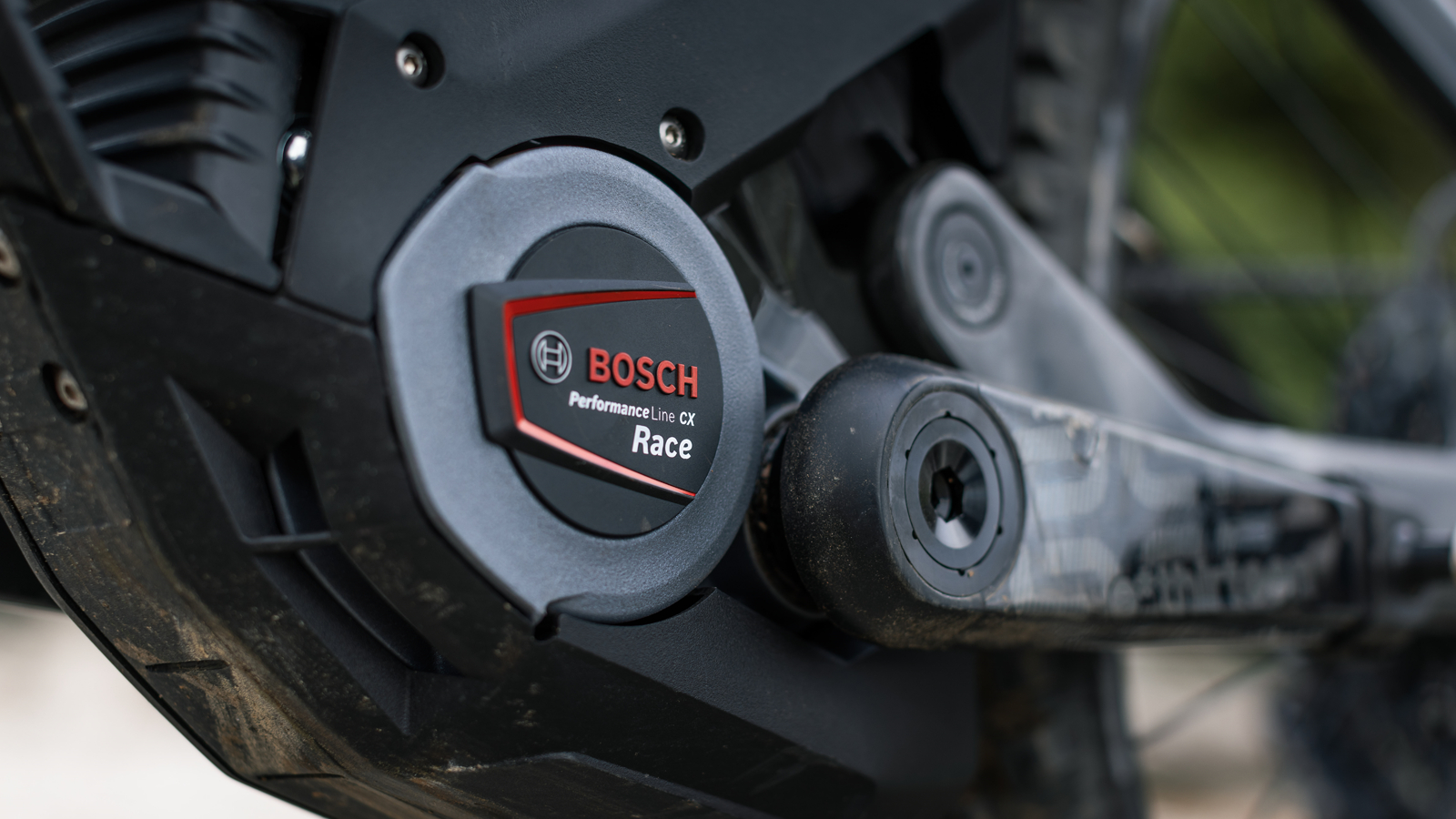
Although the frame's general layout remains the same as the previous edition, the section between the downtube and motor is now a separate section for optimized stiffness and better motor cooling. There are other new details too, a Bosch KIOX display has been integrated into the top tube and the cable routing is delivered through the headset which features a 150-degree BlockLock, although there are also routing ports on the side of the headtube as well if riders prefer. The rear end should clear a 2.8mm tire and Lapierre says the frame is compatible with all shock types on the market, including having enough space for a coil shock and the new RockShox Vivid shock.
Geometry was a big consideration for Lapierre as they wanted to improve climbing performance without sacrificing descending. The front end was slackened by a degree to 64 degrees to accommodate the long fork and the seat tube angle steepened by a degree to 77 degrees compared to the previous GLP2. The size medium I tested has a 460mm reach and the -15mm bottom bracket drop and 440mm chainstay length is the same across all sizes. The sizing has been tweaked too, with a more sloping top tube and shorter seat tube which should give more flexibility for sizing.
The kinematic is similar to the second-generation optimized around 30 percent sag to give more suppleness at the start of the stroke and increased ramp-up. There is a 0.5-degree flip-chip which was set in the high position on my test bike. Lapierre believes this is the optimal setting as it allows you to run a touch more sag and gives a little more bottom bracket clearance.
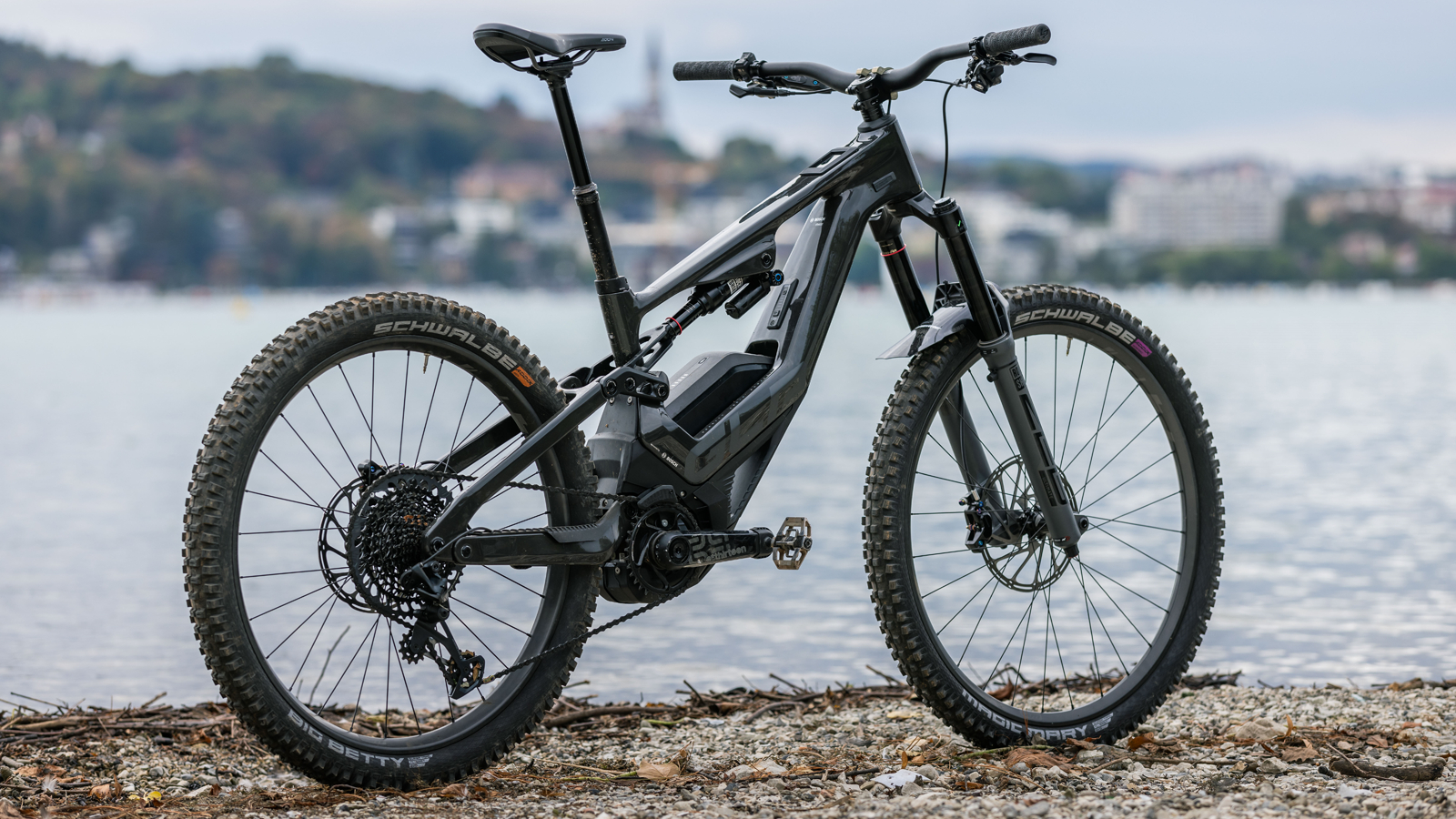
Components and build
My test bike was the top-spec Overvolt GLP III Team model which comes equipped with RockShox ZEB Charger 3 RC2 Ultimate fork and a RockShox Super Deluxe RC2T Ultimate shock. I have already touched on the top-spec Bosch Performance Line CX Race motor which drives a mechanical SRAM X01 Eagle drivetrain. Shifting performance is reliable however considering this is the halo version of the GLP3, it's a little disappointing that it doesn't have electronic shifting. Speed is rangled by a set of SRAM Code RSC four-piston brakes and large Centerline 220mm/200mm rotors.
The cockpit consists of Renthal’s 35mm diameter Fatbar and Apex stem, although I would have preferred a 31.8mm bar as I found the larger diameter bar a touch harsh. The JD dropper post can be adjusted, giving riders with shorter legs the option of reducing travel by up to 30mm so the seatpost can be slammed. That said, proportionally longer-legged riders like myself will find the 125mm (S), 150mm (M), and 170mm (L/XL) of travel on the short side.
Fitted to Lapierre’s own eAM+ carbon wheelset are Schwalbe’s Magic Mary Evo up front and Big Betty at the rear which gave confident and predictable levels of grip thanks to the Addix Soft compound. Interestingly, despite being an enduro race bike, Lapierre has specced tires with Schwalbe’s SuperTrail casing, however, I had no issues during my short testing period.
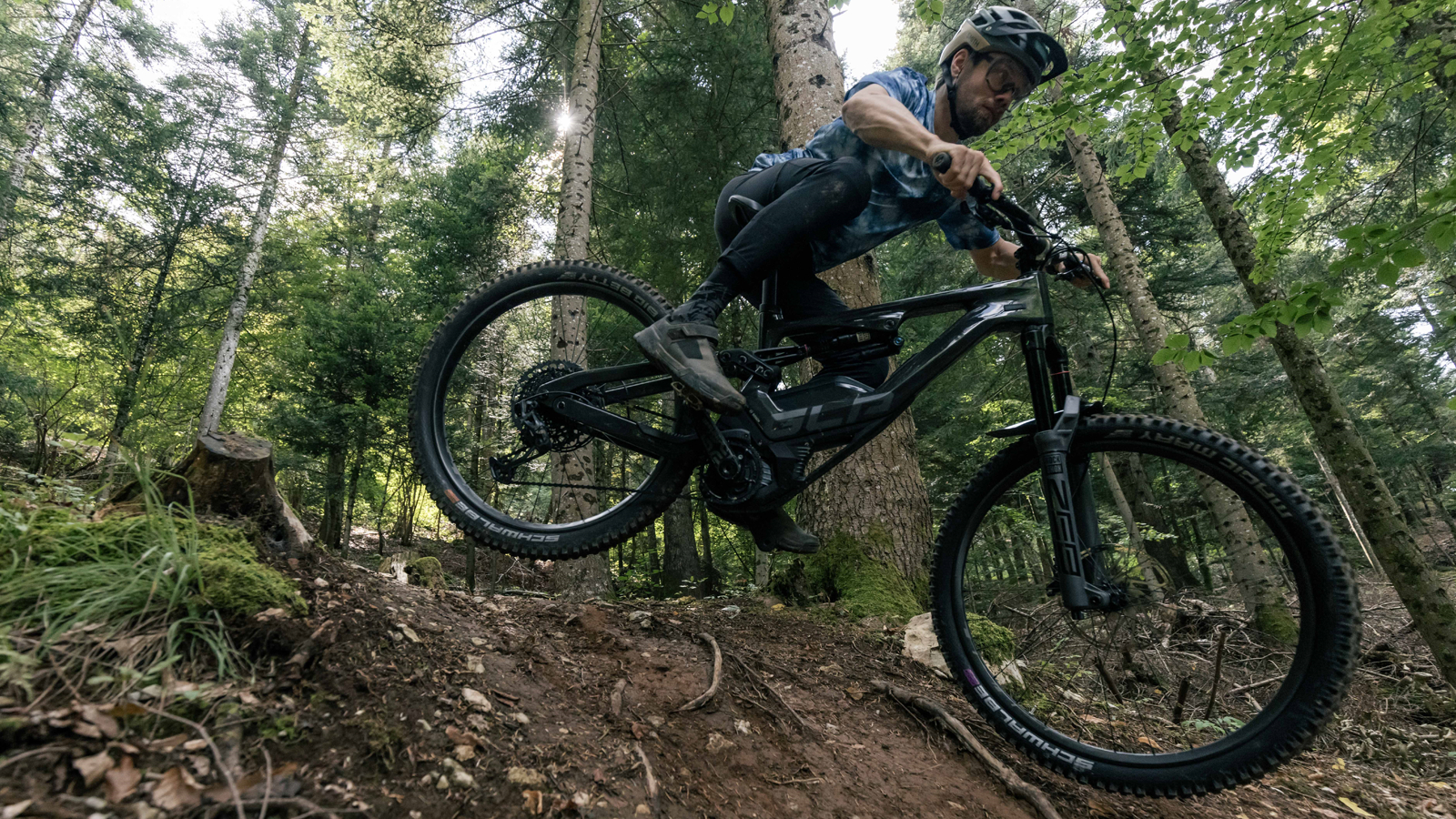
Ride and performance
Lapierre invited me out to Annecy, France to get a first ride on the Lapierre Overvolt GLP3 pre-launch and we were treated to a wide range of terrain from natural and techy to man-made with flowy to get a feel of the new Overvolt GLP3.
Lapierre’s decision to go against the grain with an external battery is immediately justified from the first spin around the car park. The bike weight is extremely centered making both ends of the bike feel considerably lighter than you would expect from a long-travel big battery e-MTB. I’m not much of a manual-er but even I could lift and hold the front end up with ease.
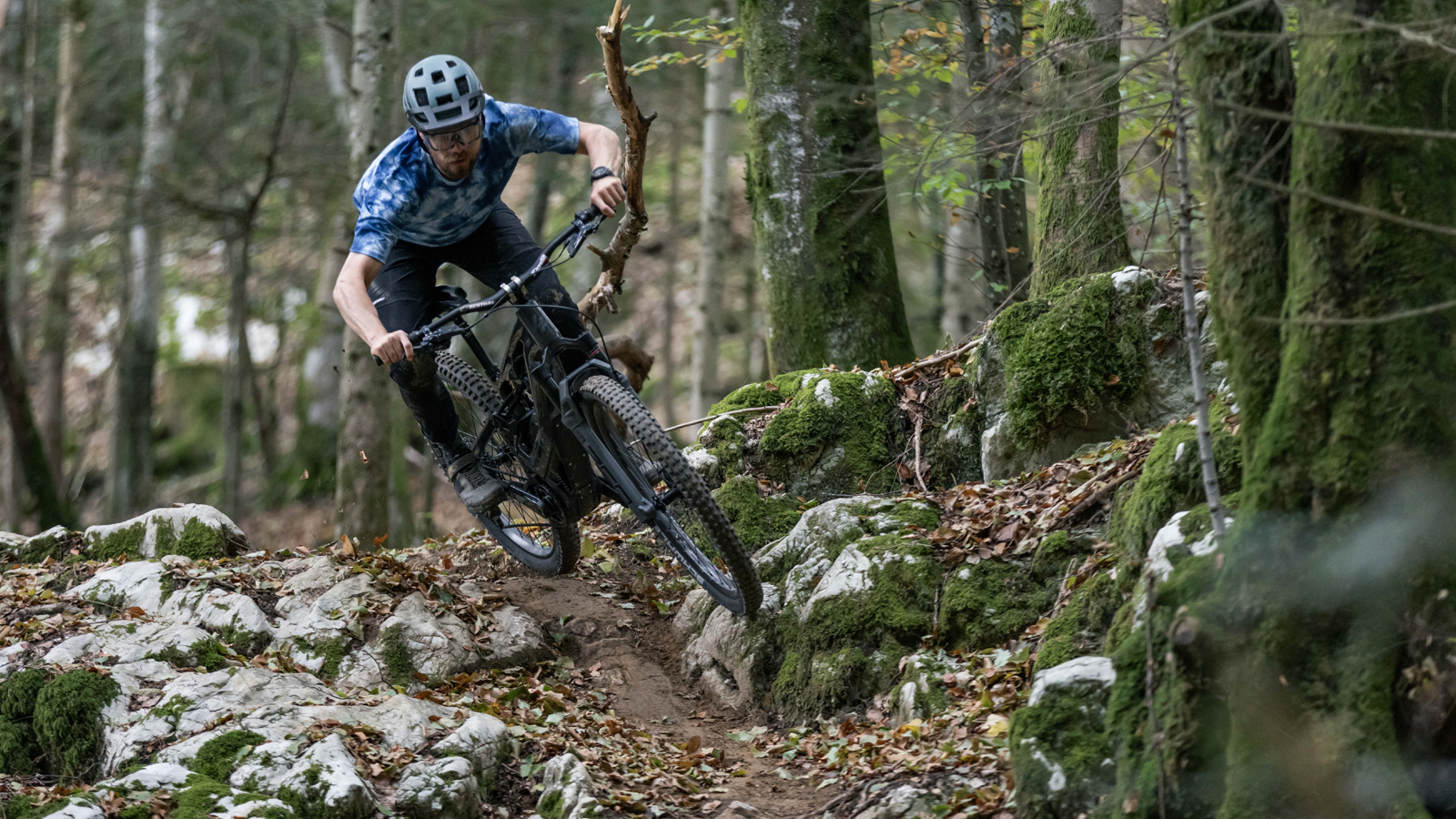
Drop into the trail and the GLP3 feels very agile and maneuverable. Handling is reactive and predictable, and it’s a breeze to pick up the wheels and place them where they need to be. I was able to dive into corners with confidence knowing that the bike was less likely to object and take me on its own off-trail adventure. This was particularly noticeable when we were led into some of the steeper trails which included some gnarly roll-ins where wheel position and line choice were crucial.
Weight distribution is only part of the equation though, other than an extra click of rebound the default RockShox suspension settings felt spot on. The suspension felt supple and grippy yet supportive, keeping the tires digging into the soil when turning and braking without feeling bogged down when I needed to grab a little airtime.
Despite being performance-driven and race-focused it's still superb to ride at any pace, a real testament to all the work that Nicolas Vouilloz and the Lapierre team have put into the GLP3.
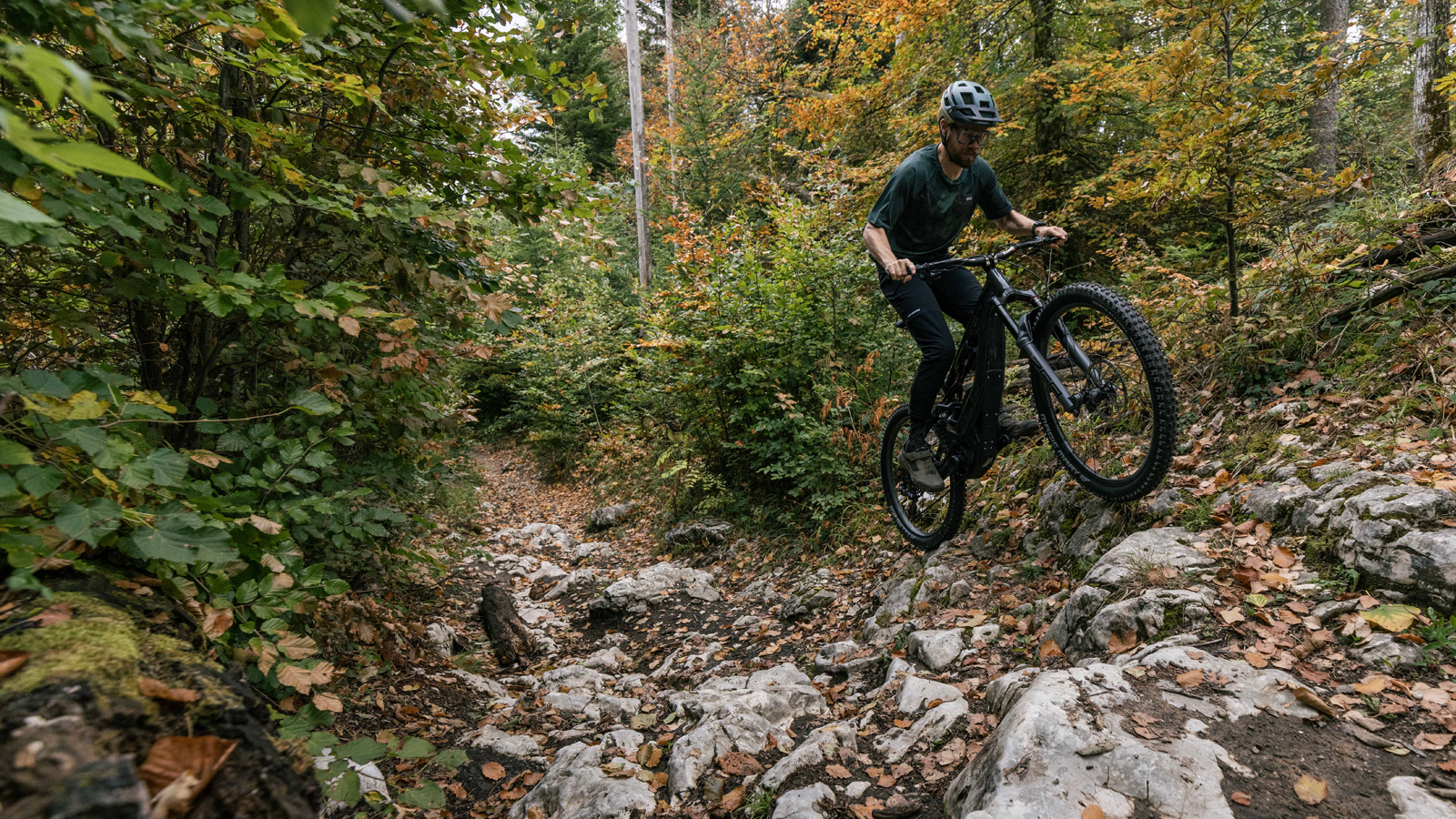
The Bosch Race motor is also superb with ample power and controllable output, if you can’t justify the extra cost, the Bosch Performance line CX motor on the Elite edition will still ride well. I really like that Lapierre has integrated the Kiox display into the frame as it not only unclutters the handlebar but also reduces the risk of damage in the event of a tumble.
Although I have only had a short experience on both bikes, I found it rode very similar to the Whyte E-160 RSX. Both bikes put low-centered battery weight distribution as a real priority and the handling benefits are strikingly obvious.
The Lapierre GLP3 isn’t a quiet bike, between the Bosch motor, plastic trim, and other bits and pieces it’s noticeably rattly on rough trails although that's obviously far from a deal breaker. If you’re fervently anti-backpacker, the lack of bottle cage bosses/any frame space to strap things to might be though.
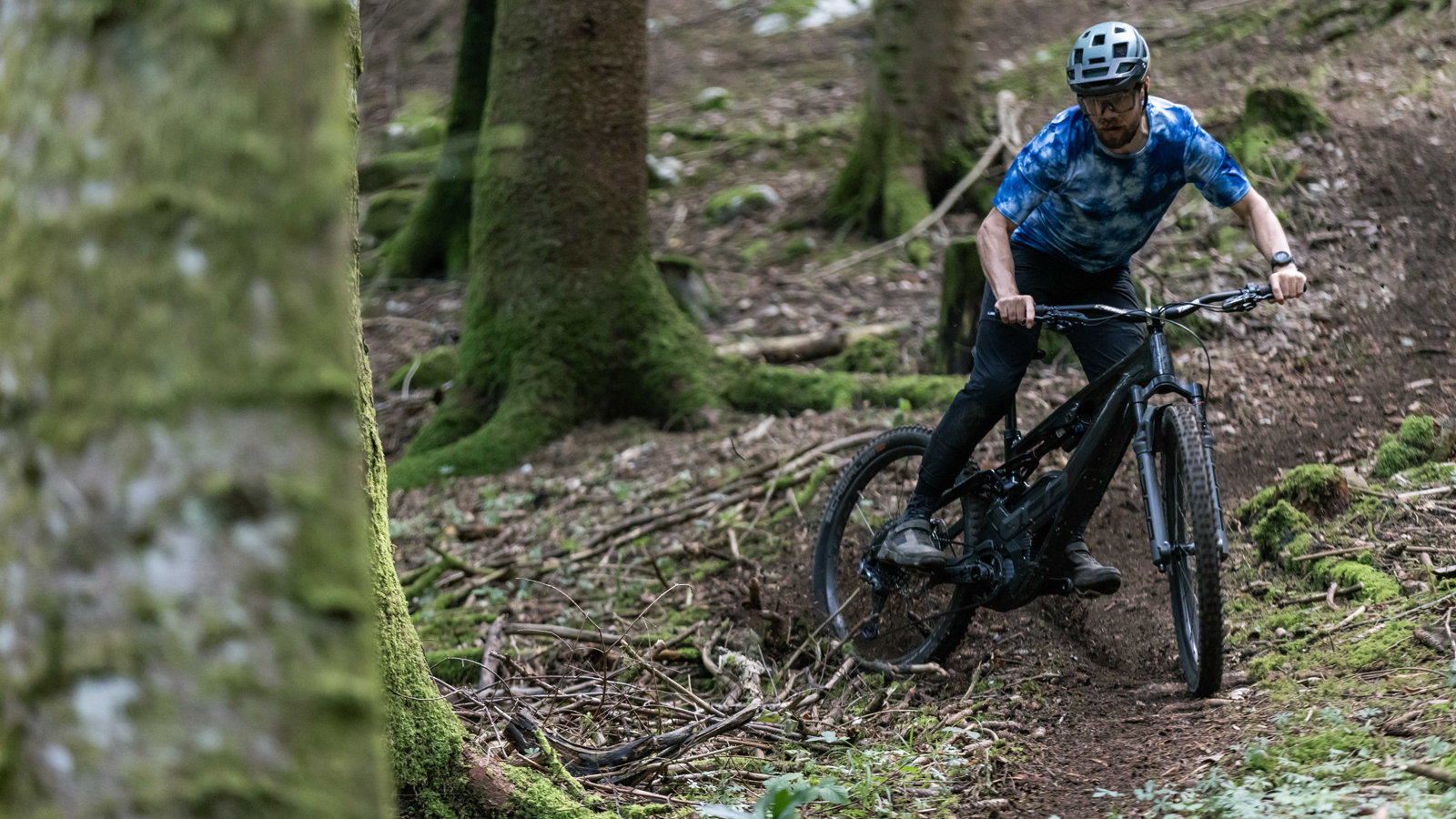
Verdict
The Lapierre Overvolt GLP3 may be a race bike but it's far from a race-only attitude. It's beautifully balanced and agile giving you pinpoint accuracy and control whether I was targeting sniper lines through hectic rock gardens or letting it hang out on flowy jump trails.
I didn’t feel like I needed to manhandle it either, The GLP3 was far more in tune with soft steering inputs and subtle hip orientations unlike other big burly e-MTB’s which have a tendency to drag you off track if you don't actively take the reins. You still get the added stability that comes with having a motor and battery on board but its central positioning is far more balanced and forgiving making steering and body adjustments more meaningful no matter how hard you are riding.
Test conditions
- Temperature: 77 to 86 degrees F / 25 to 30 degrees C
- Conditions: Damp, and rocky
- Trails: Flowy singletrack, jumps, and technical natural sections
Tech specs: Lapierre Overvolt GLP3 Team
- Frame: Lapierre Overvolt GLP, 140mm
- Motor: Bosch Performance line CX Race
- Battery: Bosch Powerpack battery 725Wh
- Fork: RockShox ZEB Charger 3 RC2 Ultimate, 170mm
- Shock: RockShox Super Deluxe RC2T Ultimate Trunnion 205x65mm
- Drivetrain: SRAM X01 Eagle, 12s
- Brakes: SRAM Code RSC 4 pistons, 220mm/200mm
- Wheelset: Lapierre eAM+ carbon
- Tires: Front: Schwalbe, Magic Mary Evo, Super Trail, Addix Ultra soft Rear: Schwalbe, Big Betty, Super Trail, Addix soft
- Seatpost: JD dropper “Rad travel adjust”, travel 125mm (S), 150mm (M), 170mm (L/XL) + Shimano lever
- Saddle: Fizik Terra Aidon X3 KIUM 145mm
- Bar: Renthal Fatbar 800mm
- Stem: Renthal Apex, 33mm, (S/M), 40mm (L/XL)
- Sizes available: S-XL
- Reach: 460mm (medium)
- Head angle: 64 degrees
- Seat tube angle: 77 degrees
- BB drop: -10mm
- Price: $N/A / £9,999 / €12,499
- Weight: 23.4kg (claimed)
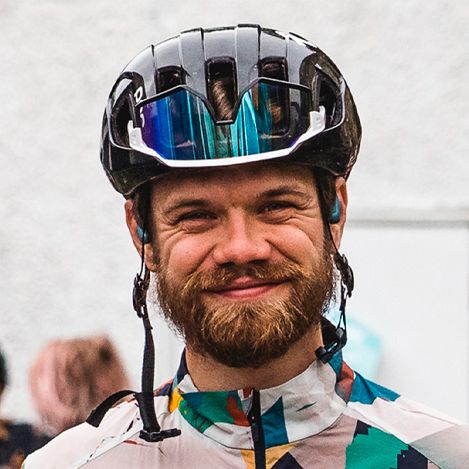
Graham Cottingham joined the BikePerfect team as our senior tech writer in 2020. With over 20 years of riding experience, he has dabbled in downhill, enduro, and gravel racing. Not afraid of a challenge, Graham has embraced bikepacking over the last few years and likes nothing more than strapping some bags to his bike and covering big miles to explore Scotland's wildernesses. When he isn’t shredding the gnar in the Tweed Valley, sleeping in bushes, or tinkering with bikes, he is writing tech reviews for BikePerfect.
Rides: Cotic SolarisMax, Stooge MK4, 24 Bicycles Le Toy 3, Surly Steamroller
Height: 177cm
Weight: 71kg
